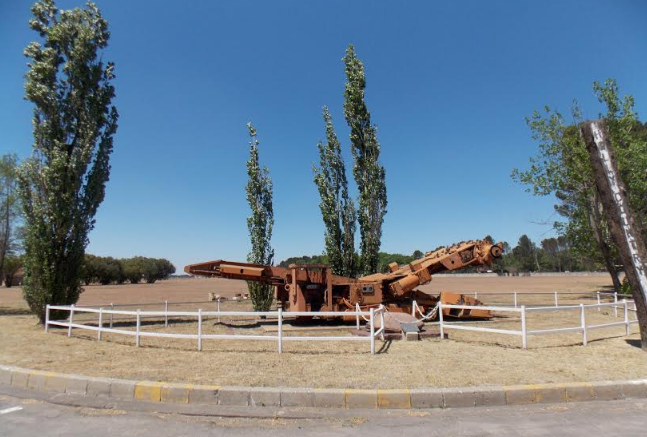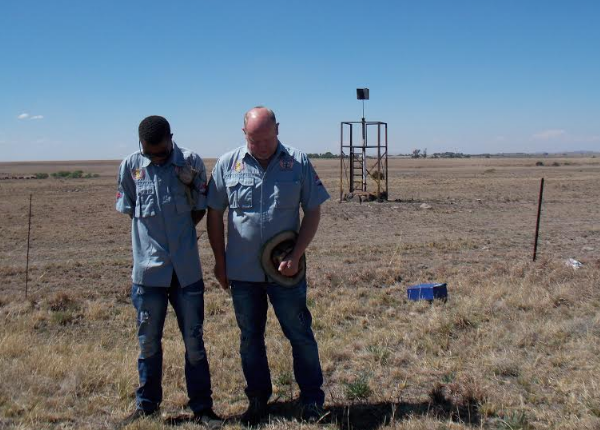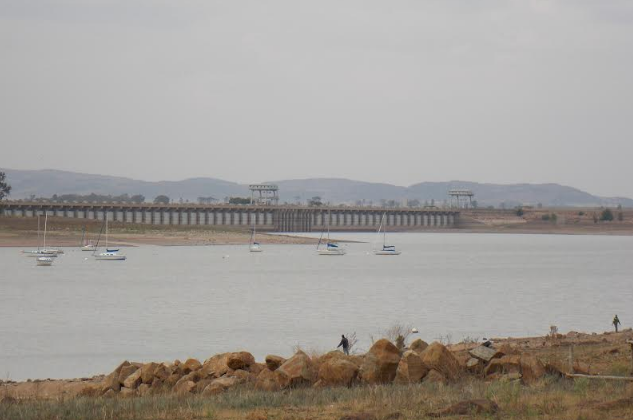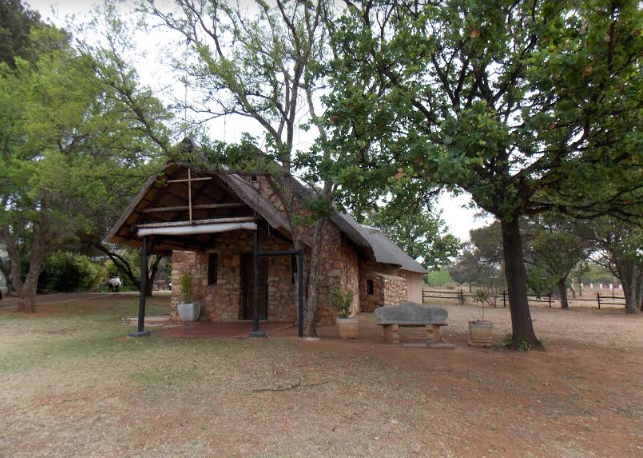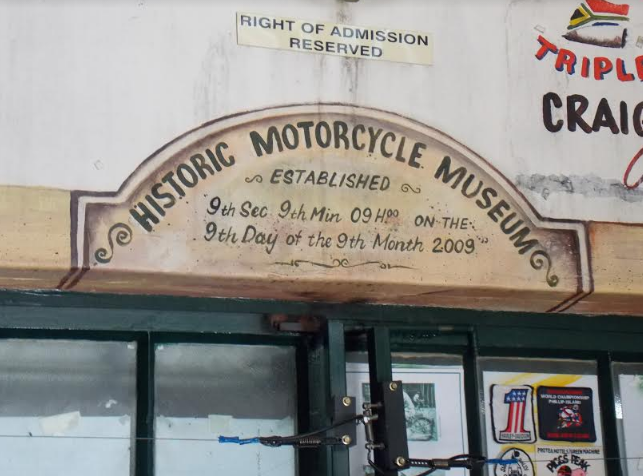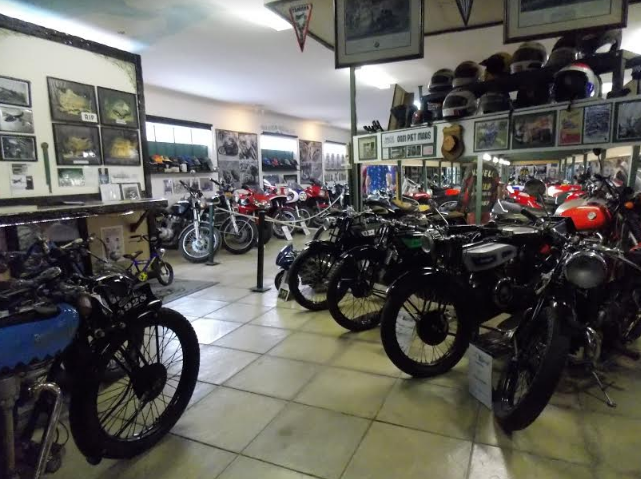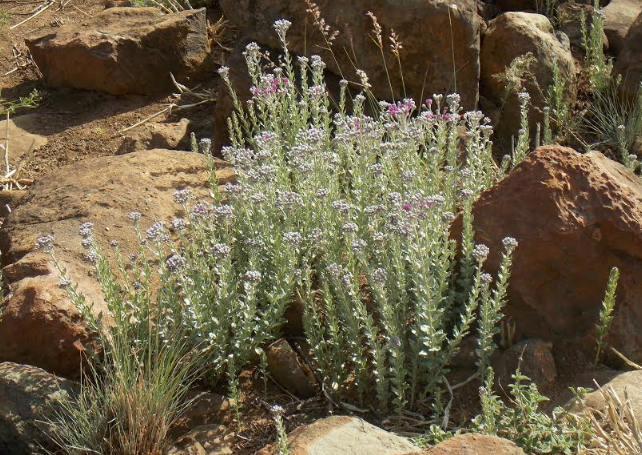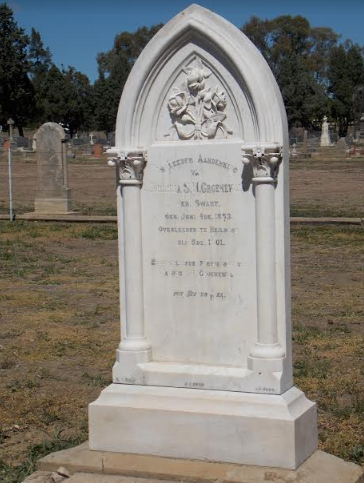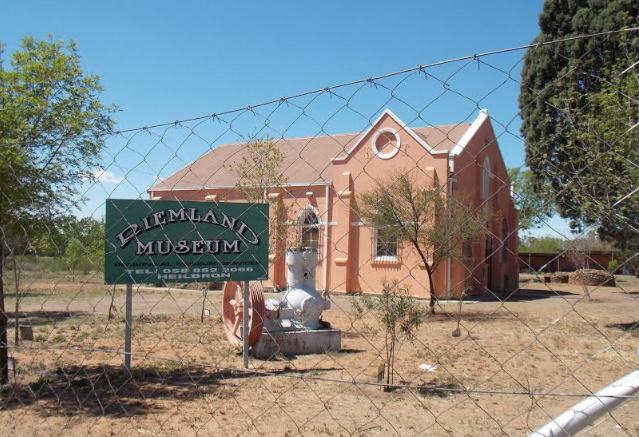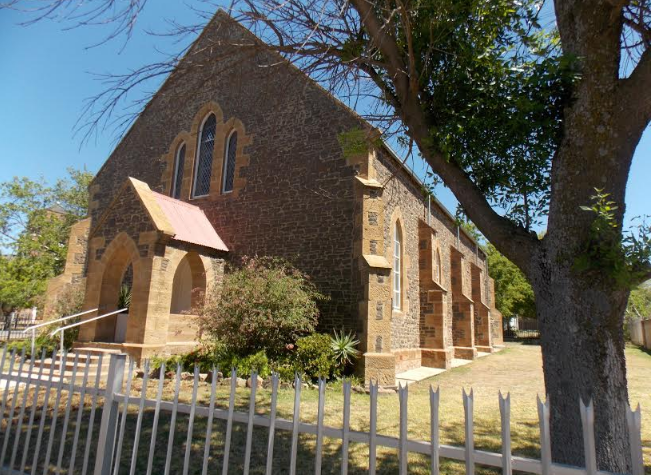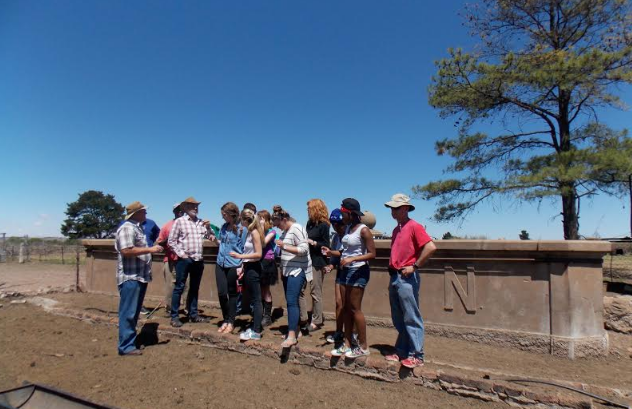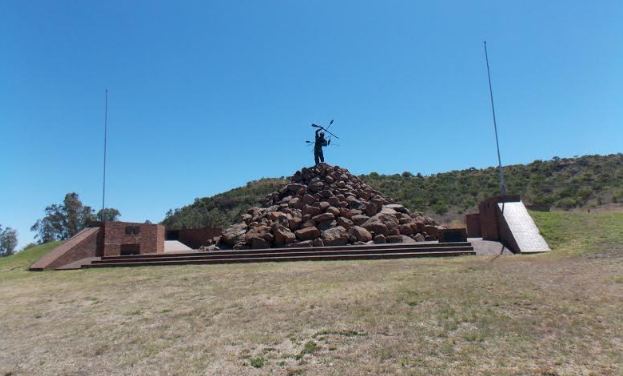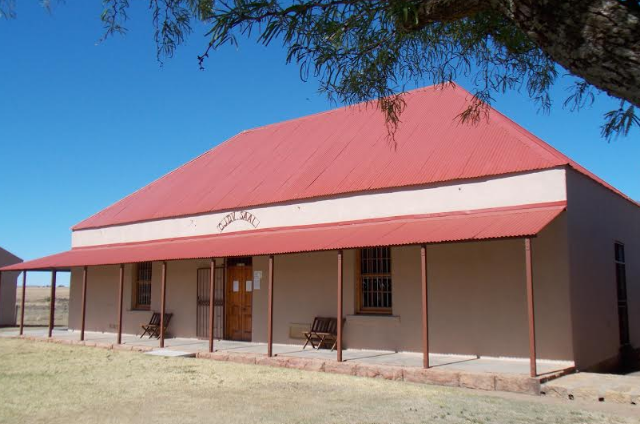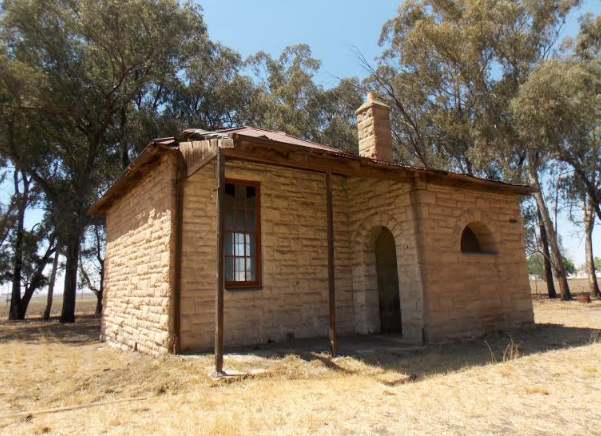
Disclaimer: Any views expressed by individuals and organisations are their own and do not in any way represent the views of The Heritage Portal. If you find any mistakes or historical inaccuracies, please contact the editor.
With a melodic sounding name the Riemland is largely an area of wide flat horizons interspersed with not much else. It is however home to some very interesting heritage hotspots in the country. The Riemland covers most of the north and north-eastern Free State, including the towns of Sasolburg, Heilbron, Petrus Steyn, Lindley, Arlington and Senekal.
In days gone by large herds of game roamed the area. Hunters came to shoot the game and made thongs or riempies from the hides. These riempies were a necessity to most farmers and were mostly used as rope. The Riemland therefore is the area from where the riempies came.
Accompanied by tour guides Twin Mosia and Piet Lombard, History and Heritage Tourism students of the North-West University, Potchefstroom Campus, visited some of the heritage sites in the Riemland area from 30 September to 3 October.
The Coalbrook tragedy
One of the largely forgotten heritage sites of the Riemland is the place where the Coalbrook mining disaster took place in 1960. The bodies of the 435 miners who died there on 21 January, after a large underground cave in, were never found. This is the biggest mining disaster in South African history and ranks under the ten biggest coal mining disasters in the world.
This occurred about 180 m below the surface in the area north east of the No. 2 Shaft of the Clydesdale Colliery. About 1 000 miners were underground at the time of which 435 became trapped. Rescue operations started immediately but were abandoned 11 days after the tragedy.
Since then the Coalbrook disaster has became a vague memory in the minds of most South Africans. Not so for Twin Mosia who is a former miner himself and can identify with the fate of these men. During the tour Twin brought the Golden Shield he received as Young Heritage Activist from the National Heritage Council to the place where one of the holes was dug to try to free the trapped miners, dedicating the Award to them. Twin would however like to see that much more is done to honour and commemorate these miners.
Apart from a small plaque next to a piece of redundant mining equipment, no monument exists to commemorate the Coalbrook disaster. Twin is busy lobbying the Chamber of Mines and other organisations to organize a commemoration.
The only memorial to the 435 miners who died in 1960 in a cave in at the Coalbrook mine is a small plaque next to this piece of redundant mining equipment. It was erected by the Taiwanese company, the current owners of the premises of the former Clydesdale Colliery at Coalbrook, currently Holly Country. Photo: Lennie Gouws
Twin Mosia and Piet Lombard observe a moment of silence at the site where one of the emergency holes was dug as part of the rescue operations to save the 435 miners trapped after a cave in at the coal mine at Coalbrook. The bodies of the miners were never found. Photo: Lennie Gouws
Taaiboschspruit School
Not far from the ruins of the houses of the mine workers at Coalbrook, stands an elegant sandstone building, built in 1904 as a single room school. The Taaiboschspruit School was built from stone from the quarry that supplied the sandstone for the Union Buildings. The school closed down in the 1950s and in 1992 it was declared a national monument, the only one in the Sasolburg district. It has since fallen into disrepair, but Piet Lombard and Twin Mosia would like to see it restored.
This elegant sandstone building, the Taaiboschspruit School, is the only declared heritage site in the Sasolburg district. Wind damage to the roof is clearly visible. Photo: Lennie Gouws
Vaal Dam and Deneysville
In contrast to the tragedy of Coalbrook, another heritage site in the Riemland stands as a sentinel of hope. Pieter Vermaak, senior water control officer stationed at the offices near the dam wall, has worked at the Dam for 16 years. He has all the quirks and quantities of the Dam at the tips of his fingers.
The Dam was built due to an increasing demand for water, especially for the Rand mines and as a job creation project during the depression of the early 1930s.
Currently no water is flowing into the Dam from its catchment area and all water comes from the Khatse Dam in Lesotho. Pumping this water is expensive, therefore, the 7 mm water per day that is lost over the whole surface of the large dam, due to evaporation, is a concern. The Dam has 60 sluice gates which can be opened to prevent the Dam from overflowing in times of floods. During the big flood of 1976 only 29 of these were opened.
Visitors are welcome to book a free tour to the dam wall by phoning 016 371 3039.
The wall of the Vaal Dam as seen from Deneysville. The Dam was only 29% full at the time the photo was taken. Photo: Lennie Gouws
Bordering on the Dam is the quaint village of Deneysville, named after Deneys Reitz, minister of agriculture and irrigation at the time when the Dam was built. Two small holiday cottages, previously owned by Reitz, were turned into this church, the St. Peter’s Church, perhaps with one of the best views of the wall of the Vaal Dam in Deneysville. Photo: Lennie Gouws
Around the block from the St. Peter’s Church, heritage of a different nature is on view. The Lake Avenue Inn and Historic Motorcycle Museum is a trip down memory lane for bikers. More than 100 rare old motorcycles are on view at the museum founded by John and Charmaine Boswell. They moved to Deneysville 10 years ago and opened the museum in 2009. Only 20 of the bikes are owned by John, the rest are on loan from various owners.
A nice drive away from Gauteng, this museum, described as the only one of its kind in the country, is a place of pilgrimage for many bikers. More information is available at lakeavenueinn.co.za. Visits to the museum must be booked.
There is no doubt when the Motorcycle Museum at Deneysville was founded. Photo: Lennie Gouws
Some of the hundred motorcycles on exhibit at the Motorcycle Museum in Deneysville. Photo: Lennie Gouws
Khoi Ruins
With abundant water, the Deneysville area has been home to many peoples for hundreds of years. Next to the entrance to the Game Reserve in Deneysville are Khoi ruins. To the untrained eye the ruins seem to be just stone circles, but if one looks closely you will find that potsherds still litter the ground.
Members of the tour were treated to another kind of heritage when Twin Mosia identified some of the indigenous plants growing at the site that are traditionally used for medicine and rituals. A plant with small purple flowers, called Lengane, is placed in the roof of a house to ward off lightning. The tea made from the leaves of a plant with small curly leaves is used as a cough remedy. Water with an aloe infusion is used to bathe in after going to a funeral or visiting a cemetery to ward off bad luck. An infusion of roots of the African potato also has healing power and is said to be able to cure HIV/Aids.
This attractive plant, known as Lengane, is believed to ward off lightning. It grows amongst the Khoi ruins at Deneysville. Photo: Lennie Gouws
Heilbron
Tragedies make good history, as is the case with the Coalbrook disaster. The same goes for the cemetery in Heilbron, which is the source of many tragic stories. A memorial to the 781 women and children that died in the concentration camp during the South African War at Heilbron stands a stone’s throw away from the memorial to the British soldiers who died in the same war.
The graves in the concentration camp cemetery are mostly anonymous, except for the elegant tombstone of Hannetjie Groenewald. Her husband was a rich farmer from the district who was taken prisoner during the war. Back in South Africa he received the sad news that his wife, Hannetjie, died in the concentration camp. He asked permission to have her remains reburied in the family cemetery on his farm. No one knew where she was buried, so this was impossible. He then had a tombstone erected for her over a random grave in the concentration camp cemetery. A duplicate tombstone was erected in the family cemetery on his farm. Thus Hannetjie Groenewald became the women with two tombstones, but neither was erected over her grave.
This tombstone of Hannetjie Groenewald, erected by her grieving husband in the Heilbron cemetery is one of two. Neither is erected over her grave since nobody knew where she was buried. The other one stands in the cemetery on family’s farm. Photo: Lennie Gouws
Heilbron is also home to the Riemland Museum, housed in the building that previously served the now defunct Jewish community as a synagogue. The synagogue was erected in 1912. The Riemland Museum is a community project, which is visible in the varied exhibits reflecting not only the history of the town, but giving an overview of current businesses and institutions. Photo: Lennie Gouws
One of the attractions during the tour was the Methodist Church in Heilbron on the corner of Heil and Bree Street. The corner stone of the church was laid by Pres Jan Brand, president of the Orange Free State in 1882. It was the second church to be built in Heilbron, after the Dutch Reformed Church. Photo: Lennie Gouws
One of the biggest surprises of the tour was found on the farm Tot Hier Toe in the Heilbron district. Tucked away behind a garage at the side of an enclosure filled with manure is an architectural gem! When farmer Nicolaas Swart in the 1940’s wanted a dam he had the expert building skills available of some Italian prisoners of war. The dam is the only structure in the area built by Italian prisoners of war. The square dam with its elegant plaster work has a pedestal in the centre, topped by a round stone with an opened mouth fish, from which water would have spouted when the dam was in its heyday. The Italians even added the initials of the owner of the farm at the time to the side of the dam. The “N” is still visible, but the “S” has since disappeared. The dam was built to water the extensive orchards of the farm, but is now sadly empty and derelict. Fruit from these trees were used to make mampoer. During the tour a mampoer toast was drunk in honour of the Italians and Nicolas Swart.
The POW Dam. Photo: Lennie Gouws
Vegkop
Vegkop, about 20 km south from Heilbron, is the place where the Voortrekkers encountered the Matabeles in a battle on 16 October 1836. About 6 000 Matabeles came up against the group of Voortrekkers of which only 33 men were able to defend them. In the skirmish two of these men died, with 430 of the Matebele left dead. The Matabele were however able to raid all the livestock of the Voortrekkers, leaving them stranded since the oxen used for drawing their wagons were also gone.
The Voortrekkers were able to get oxen from the Barolong at Thaba Nchu and immediately started to plan retaliation. This took place when a raid was conducted against the Matabele at Mosega in January 1837.
The Vegkop site has been a place of commemoration since the 1880s. A small hall was erected in 1904 where the yearly commemoration of the Battle of Bloedrivier and the Covenant made there on 16 December 1838 could be commemorated. It currently houses a museum with various Voortrekker memorabilia. Various memorials were erected at the site over the years. The most commanding is a large stone cairn with a sculpture by Coert Steynberg at its pinnacle. It is set with the Vegkop hill as backdrop. On both sides stone walls with three bronze friezes each, depict the story of Vegkop.
With the dramatic backdrop of the Vegkop hill, the memorial to this battle is topped by a sculpture by Coert Steynberg. Photo: Lennie Gouws
A hall built in 1904 as a venue for Covenant day festivities now houses the museum at the Vegkop battle site. Photo: Lennie Gouws
For more information on tours to the Riemland area, visit the Facebook page “Riemland Tours / Toere”. Click here to view
Comments will load below. If for any reason none appear click here for some troubleshooting tips. If you would like to post a comment and need instructions click here.

